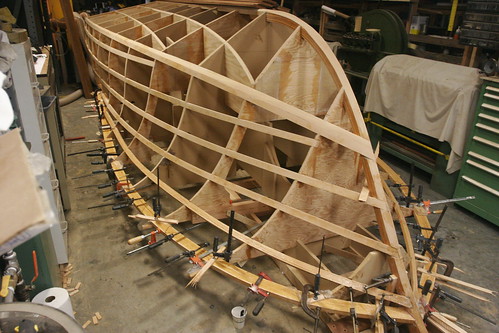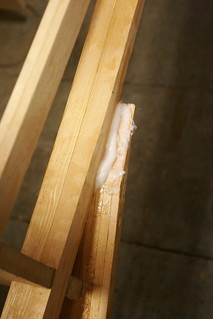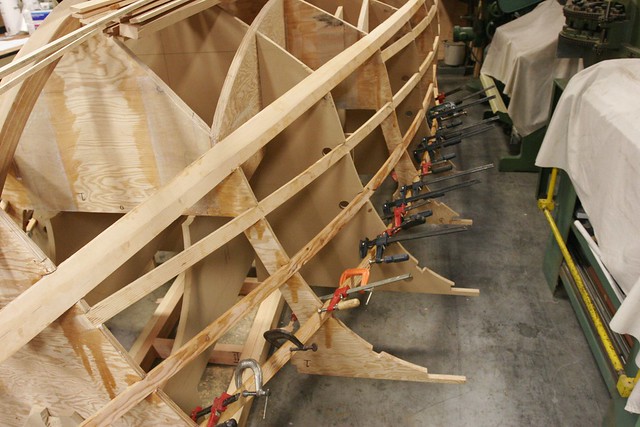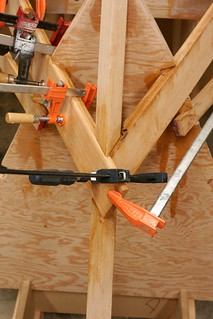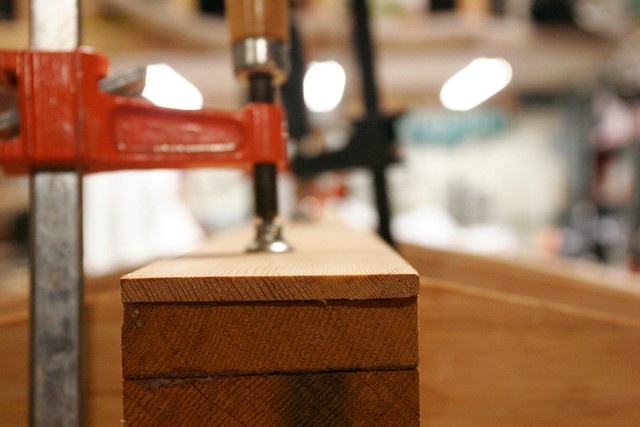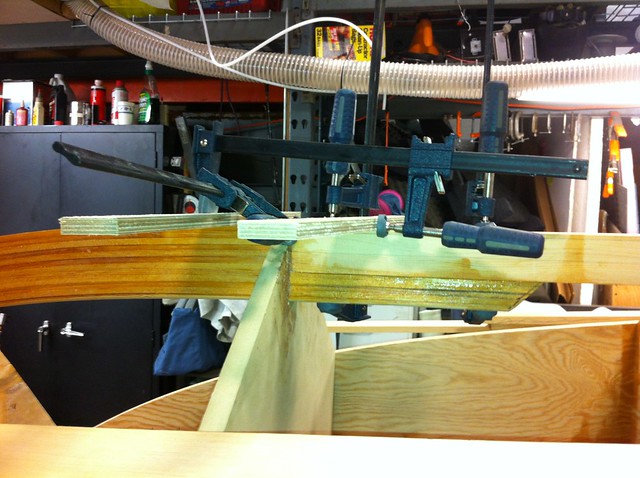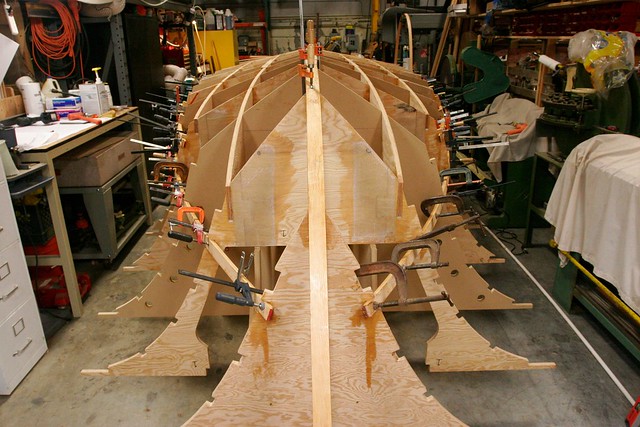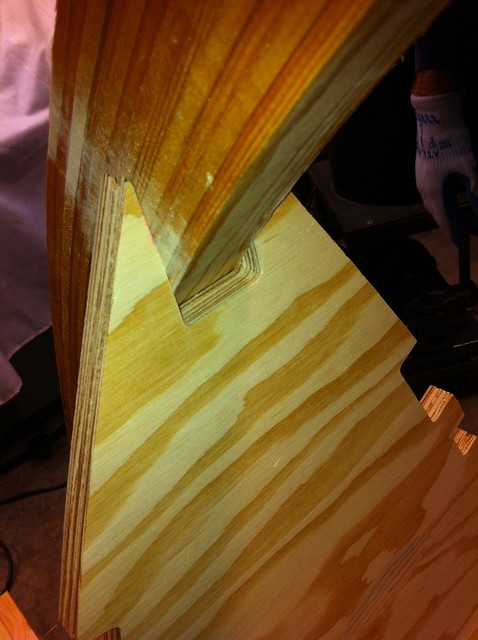The last of the longitudinal members are now installed! These are the forward sheer clamps, and they define the line at the outside of the top of the hull in the forward part of the boat. As the Kitty Hawk 18 is a Carolina-style hull, it has a broken sheer, and a very flared bow. The sheer line on a boat is – simply put – the line that the top of the hull makes when the boat is viewed from the side. “Broken sheer” means that that there is a sharply divided sheer line on this hull. In the aft sections, the sheer line is lower. In the forward sections it’s higher. And there is pronounced transition between these sections. It’s also the case that the forward sheer on this boat flares widely relative to the aft.
Because the hull essentially “ends” at the sheer line, you need a stout member similar to the chine log which anchors the side of the hull and provides an attachment point for the topsides of the boat. This is called a sheer clamp. The aft sheer clamps went in with the side stringers and were pretty simple. I didn’t bother discussing that. The forward ones are trickier because of the complex curves.
We decided to laminate them from eight strips of 1″ tall x 3/8″ wide doug fir. They didn’t need too many clamps – relatively speaking – so we were able to lay them both up the same day. Here they are after being installed.
The intersection of the forward sheer clamp and the aft one is complicated. Here’s the junction just after the clamps came off. The outer sections of the forward one will get shaved away during the fairing process to produce a smooth junction.

